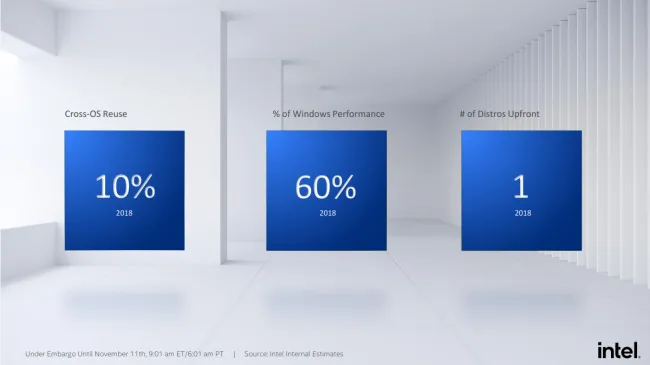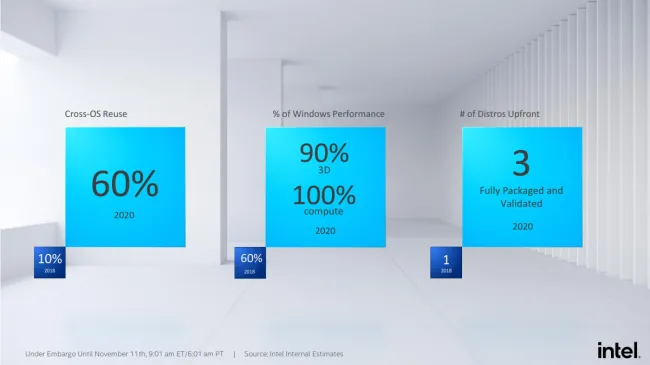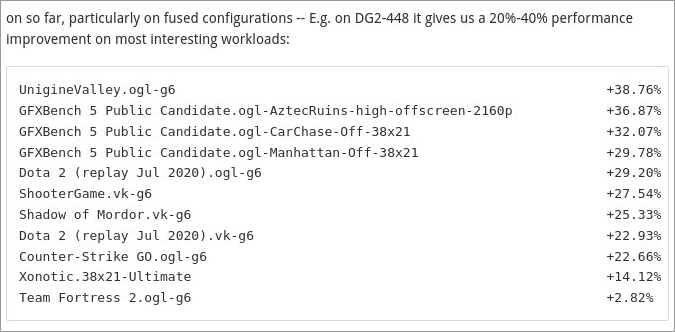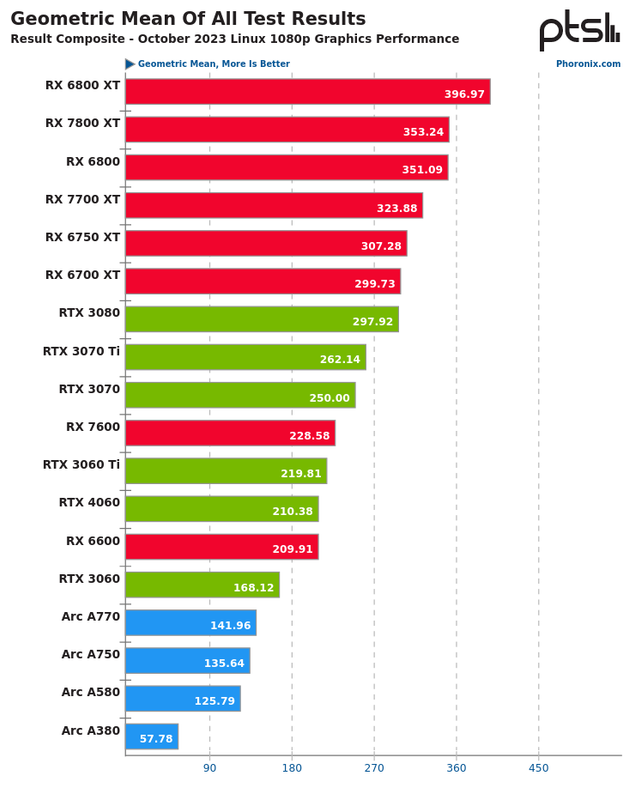Bom após a criação dos "novos driver" Iris (OpenGL) e Neo (OpenCL), a Intel agora divulgou o estado da nação relativamente aos drivers Linux para GPU e para os GPU para o mercado de servidores.


Lisa Pearce as Intel's Graphics Software Engineering Director presented during the briefings on their Linux graphics driver and preparing for them for the data center. She noted how just two years ago only around ~10% of their driver code was re-used across platforms (namely Windows and Linux) and their Linux driver delivered roughly 60% the performance of Windows. They also officially only supported one distribution.
But now as we approach 2021, there is around ~60% code re-use and the Linux performance is at 90~100% that of Windows and are validating on all three major enterprise Linux distributions. The relative performance for 3D is at roughly 90% depending upon quality of the Linux game port or if native, among other factors, while the compute performance is roughly on par between Windows and Linux.
Linux Is Riding High For Intel Graphics
Afterwards I was able to talk more with Lisa about the company's current trajectory around their open-source/Linux driver efforts. Of the ~60% driver code in common between platforms, it boils down to the Intel Graphics Compiler (IGC) and Media/Compute components being shared now across Windows and Linux. The OpenGL and Vulkan drivers and the kernel mode drivers remain separate code-bases. This recent push around ramping up their Linux driver efforts come down squarely on their data center ambitions. Since ~2018 when forming their GPU plans for the data center they began integrating their formerly separate Linux graphics driver team and making other fundamental changes to bolster their Linux support.
A few months ago I reported on Intel's Windows driver beginning to use IGC and there was even an internal prototype for Mesa. In speaking with Lisa, that IGC work for Mesa is advancing. In adapting their ANV Vulkan driver to use IGC rather than their internal Intel Mesa compiler is yielding promising performance results that appear to be measurably faster than the current compiler. Intel is also looking at using IGC for their Iris Gallium3D OpenGL driver too but the Vulkan driver is understandably the immediate focus. Right now on Linux the Intel Graphics Compiler is just used by their OpenCL/Level-Zero compute stack.
While providing faster performance and more code re-use across platforms, there are implications though on Intel's Mesa drivers using IGC: the Intel Graphics Compiler would be a new build dependency for Mesa and Linux distributions would need to begin packaging it, adding to additional size on the image. The Intel IGC core binary comes in at roughly an additional 30MB to be squeezed on Linux desktop ISOs.
https://www.phoronix.com/scan.php?page=article&item=intel-server-igc&num=1GUI Control Panel For Linux?
Also notable on the Intel Linux graphics driver radar for 2021 is possibly having an Intel Command Center / graphics driver control panel. Right now Intel's Linux driver stack already exposes most of the tunables that can be found within Intel's Windows driver area, but not GUI driven. Much of the tunables and monitoring interfaces for the Intel Linux driver are only accessible via command-line interfaces, setting not always well documented environment variables or module parameters, etc.


